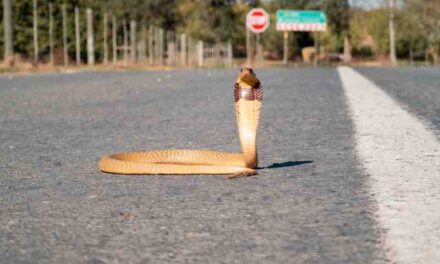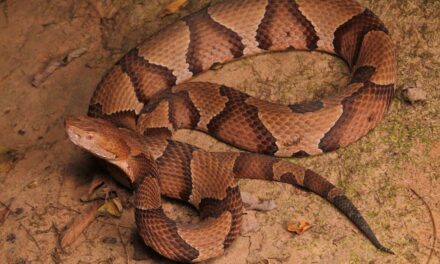Saltwater crocodiles, the largest living reptiles , are apex predators with a fearsome reputation. While the idea of owning such a creature might seem thrilling to some, the reality is far more complex. This article delves into the biological needs, legal restrictions, and ethical considerations surrounding keeping saltwater crocodiles as pets, ultimately assessing the feasibility and responsibility of such an endeavor.
Biology and Behavior of Saltwater Crocodiles
Understanding the natural history of saltwater crocodiles is crucial to understanding the challenges of keeping them as pets. These crocodiles, with an average lifespan of 41.7 years in captivity 2, are highly adapted to aquatic life, with a preference for brackish and freshwater habitats like estuaries, rivers, and swamps 3. They are also capable of venturing far out to sea, highlighting their adaptability and swimming prowess 3. Interestingly, they are believed to have originated in Africa and radiated towards Southeast Asia and the Americas, diverging from their closest relative, the extinct Voay of Madagascar, around 25 million years ago 4.
Saltwater crocodiles are formidable apex predators 1, and their large size is a testament to their dominance in their natural environment. Males can grow up to 23 feet long and weigh over 2,200 pounds, while females are typically smaller, reaching around 10 feet in length 5. Their diet consists of fish, birds, and mammals, with larger individuals capable of taking down prey as large as wild boar, water buffalo, and even sharks 3.
Unlike many other crocodile species, saltwater crocodiles are highly active, spending more time cruising and active, especially in water 4. This further emphasizes the need for spacious enclosures if they are to be kept in captivity.
These crocodiles are primarily solitary creatures, except during mating season. Males are highly territorial and defend their domains aggressively, while females exhibit less territoriality 3. They have a polygynous mating system, with males mating with multiple females 6. They are also nocturnal, spending their days moving through water or basking in the sun to regulate their body temperature 6.
Saltwater crocodiles communicate through a range of vocalizations, including barks, hisses, growls, and chirps, as well as visual and chemical signals 5. These calls serve various purposes:
| Call Type | Description |
| Distress call | High-pitched series of short barks, primarily used by juveniles. |
| Threat call | Hissing sound directed at intruders. |
| Hatching call | High-pitched short bark made by newborns. |
| Courtship bellow | Long, low growl used during mating season. |
Legal Restrictions
The legality of owning a saltwater crocodile varies significantly depending on the country and region. In Australia, for example, only Victoria and the Northern Territory permit pet crocodiles, with Victoria recommending a size limit of 2.5 meters 8. The Northern Territory recently reissued permits after a ban due to the increasing saltwater crocodile population 8. It is important to note that feeding crocodiles is illegal and dangerous in the Northern Territory 9.
In the UK, owning a crocodile requires a license and adherence to strict regulations regarding housing and care 10. However, the practical challenges and ethical considerations often outweigh the legal permissions.
Practical Challenges
Keeping a saltwater crocodile presents numerous practical challenges that make it an unsuitable choice for most people.
Enclosure Size and Design: Due to their large size and active nature, saltwater crocodiles require substantial enclosures with both land and water areas. The enclosure must be secure to prevent escape and ensure public safety. Providing adequate space for a fully grown adult crocodile, which can exceed 20 feet in length, is a significant undertaking 11. In Florida, for instance, the enclosure must allow the crocodile to turn around without touching the walls, a requirement that some experts find inadequate 11. This limited space can restrict their natural movement and behaviors, potentially leading to stress and compromised welfare.
Environmental Conditions: Maintaining appropriate water temperature, salinity, and filtration is crucial for the crocodile’s health. They also require access to basking areas with suitable heat sources to regulate their body temperature 1. Replicating the natural environment of a saltwater crocodile in a captive setting is a complex and resource-intensive task. Factors such as water depth, vegetation, and substrate must be carefully considered to mimic their natural habitat.
Feeding and Nutrition: Providing a varied and appropriate diet for a saltwater crocodile is essential. Their diet in the wild includes a wide range of prey, from fish and crustaceans to larger mammals 1. Replicating this diversity in captivity can be challenging and expensive. Sourcing appropriate food items, ensuring proper nutrition, and avoiding overfeeding are crucial aspects of their care.
Enrichment and Socialization: Crocodiles are intelligent animals that require mental and physical stimulation. Providing enrichment activities, such as novel objects, varied feeding strategies, and opportunities for exploration, is crucial to their well-being 12. However, their solitary nature and territorial behavior limit social interaction, even with other crocodiles 13. This presents a challenge for keepers, who must find creative ways to provide enrichment for a solitary and potentially aggressive animal.
Health and Safety Risks for Handlers: Working with saltwater crocodiles carries inherent risks due to their size, strength, and unpredictable nature. Their powerful tails can inflict serious injury, and there is a risk of Salmonella infection from handling them or their enclosures 14. The physical demands of capturing and restraining these animals also pose ergonomic challenges for handlers 14. Specialized training and strict safety protocols are essential to minimize these risks.
Potential Dangers
The inherent dangers of keeping a saltwater crocodile cannot be overstated. Their immense size, powerful jaws, and aggressive nature pose a significant risk to human safety. Even seemingly docile individuals can inflict severe injuries, and their predatory instincts remain strong in captivity 11. Their advanced cognitive abilities, including their capacity for recognizing patterns and exploiting prey behavior, further contribute to their unpredictable nature 15.
Saltwater crocodiles have a bite force of over 3,700 pounds per square inch, capable of crushing bones and causing severe lacerations 16. They are also known for their “death roll,” a maneuver used to drown and dismember prey 17. These inherent dangers make them unsuitable pets for even the most experienced animal handlers.
In the Solomon Islands, for example, most crocodile attacks occur in the evenings, resulting in both minor and serious injuries 18. This highlights the real-world risks associated with human-crocodile interactions, even in areas where these animals are native.
Documented Cases and Outcomes
While there are documented cases of people keeping saltwater crocodiles, these instances are often in controlled environments such as zoos or wildlife sanctuaries. For example, Cassius, a 17-foot saltwater crocodile, lived in captivity for 40 years at Marineland Melanesia Crocodile Habitat in Australia 19. He was captured after exhibiting aggressive behavior in the wild.
However, keeping saltwater crocodiles in private settings is rare and generally discouraged due to the inherent risks and challenges involved. Some crocodile farms raise these animals in confined spaces for commercial purposes, but these conditions often raise ethical concerns regarding animal welfare 20.
These documented cases, while providing insights into the long-term care of these animals, also underscore the challenges and potential risks associated with keeping them in captivity. This leads to important questions about the ethical implications of such practices.
Environmental Impact
Beyond the immediate concerns of keeping saltwater crocodiles as pets, it’s crucial to consider their role in the environment and the impact of human activities on their populations. Plastic pollution, in particular, poses a significant threat to these animals and their habitats 16.
Microplastics can be ingested by crocodiles, potentially leading to health problems and interfering with their ability to obtain proper nutrition. Plastics can also absorb and accumulate harmful chemicals, which can then be ingested by crocodiles and biomagnify up the food chain, posing a risk to other marine species and even humans who consume crocodile meat.
Furthermore, plastic pollution can disrupt crocodile migration patterns, degrade their habitats, and contribute to the overall decline of their populations. This highlights the interconnectedness of environmental health and animal welfare and emphasizes the need for responsible waste management and conservation efforts.
Ethical Considerations
Beyond the practical challenges and safety concerns, keeping a saltwater crocodile as a pet raises significant ethical questions. These apex predators are wild animals with complex needs that are difficult to meet in captivity. Confining them to artificial environments can lead to stress, behavioral problems, and compromised welfare 11.
Furthermore, the potential for harm to humans and other animals is a serious ethical concern. Even with the best intentions and safety measures, accidents can happen, and the consequences can be devastating. Is it ethically justifiable to keep such a potentially dangerous animal in a domestic setting, knowing the risks involved?
While the allure of owning a saltwater crocodile might be tempting, the reality is that these magnificent creatures are not suitable as pets. The practical challenges, legal restrictions, potential dangers, and ethical considerations all point to the same conclusion: saltwater crocodiles belong in the wild, not in our homes.
Their complex needs, immense size, and predatory instincts make them a poor choice for even the most experienced animal handlers. Instead of seeking to confine these apex predators, we should focus on their conservation in their natural habitats, where they play a vital role in maintaining healthy ecosystems. Ultimately, the desire to possess such a creature must be tempered with an understanding of its inherent needs and the ethical implications of captivity. By appreciating saltwater crocodiles in their natural environment, we can contribute to their conservation and ensure their survival for generations to come.
Works cited
1. Saltwater Crocodiles, Crocodylus porosus – MarineBio Conservation Society, accessed on February 21, 2025, https://www.marinebio.org/species/saltwater-crocodiles/crocodylus-porosus/
2. Crocodylus porosus (Saltwater crocodile) – Animal Diversity Web, accessed on February 21, 2025, https://animaldiversity.org/accounts/Crocodylus_porosus/
3. Saltwater Crocodile: Enormous and Dangerously Patient – Animals | HowStuffWorks, accessed on February 21, 2025, https://animals.howstuffworks.com/reptiles/saltwater-crocodile.htm
4. Saltwater crocodile – Wikipedia, accessed on February 21, 2025, https://en.wikipedia.org/wiki/Saltwater_crocodile
5. Saltwater Crocodile – Oceana, accessed on February 21, 2025, https://oceana.org/marine-life/saltwater-crocodile/
6. Australian Saltwater Crocodile – Facts, Diet, Habitat & Pictures on Animalia.bio, accessed on February 21, 2025, https://animalia.bio/australian-saltwater-crocodile
7. oceana.org, accessed on February 21, 2025, https://oceana.org/marine-life/saltwater-crocodile/#:~:text=Saltwater%20crocodiles%20are%20opportunistic%20feeders,pigs%2C%20buffalo%20and%20even%20humans.&text=7.,%2C%20hissing%2C%20growling%20and%20chirps.
8. As the Northern Territory starts reissuing pet crocodile permits, here’s what it’s like to own one – SBS, accessed on February 21, 2025, https://www.sbs.com.au/news/article/as-the-northern-territory-starts-reissuing-pet-crocodile-permits-heres-what-its-like-to-own-one/9ulf6qgol
9. Crocodile safety – Northern Territory Government, accessed on February 21, 2025, https://nt.gov.au/__data/assets/pdf_file/0017/202580/crocodile-safety.pdf
10. Can you have a crocodile as a pet in the UK? – Into The Blue, accessed on February 21, 2025, https://www.intotheblue.co.uk/blog/crocodile-as-a-pet-in-the-uk/
11. Why you shouldn’t keep a pet crocodile and other Reptile Trade LIES – YouTube, accessed on February 21, 2025, https://www.youtube.com/watch?v=ze4HJ3HzcW4
12. Crocodilian Enrichment: The good, the bad, and the untried – St. Augustine Alligator Farm, accessed on February 21, 2025, https://www.alligatorfarm.com/crocodilian-enrichment-the-good-the-bad-and-the-untried/
13. Behaviours of farmed saltwater crocodiles (Crocodylus porosus) housed individually or in groups – PMC – PubMed Central, accessed on February 21, 2025, https://pmc.ncbi.nlm.nih.gov/articles/PMC11261483/
14. Saltwater Crocodile Crocodylus porosus, accessed on February 21, 2025, https://www.rares.world/wp-content/uploads/2019/07/Reptilia-Crocodylidae-Crocodylus-porosus-SaltwaterCrocodile-AP2018-v-1.pdf
15. 1 CROCODILE and ALLIGATOR SAFETY FOR FIELD RESEARCHERS Perran Ross, pross@wec.ufl.edu Crocodilian Research Program Dept. Wildli, accessed on February 21, 2025, https://wec.ifas.ufl.edu/media/wecifasufledu/files/safety/Crocodile-safety.pdf
16. Creature Feature: Saltwater Crocodiles – 4Ocean, accessed on February 21, 2025, https://www.4ocean.com/blogs/cause-of-the-month/creature-feature-saltwater-crocodiles
17. Saltwater Crocodile: Predator-Prey Interactions, Fights, and Aggressive Behaviors | Animal Matchup, accessed on February 21, 2025, https://www.animalmatchup.com/animal/saltwater-crocodile
18. Living with saltwater crocodiles: how local data can help promote coexistence, accessed on February 21, 2025, https://www.oryxthejournal.org/blog/living-with-saltwater-crocodiles-how-local-data-can-help-promote-coexistence/
19. Cassius, the world’s biggest captive crocodile, may have been over 120 years old when he died | Live Science, accessed on February 21, 2025, https://www.livescience.com/animals/alligators-crocodiles/cassius-the-worlds-biggest-captive-crocodile-may-have-been-over-120-years-old-when-he-died
20. Order restored in Indonesia as fishers recapture scores of farmed crocodiles – Mongabay, accessed on February 21, 2025, https://news.mongabay.com/2025/02/order-restored-in-indonesia-as-fishers-recapture-scores-of-farmed-crocodiles/






I don’t think the title of your article matches the content lol. Just kidding, mainly because I had some doubts after reading the article.